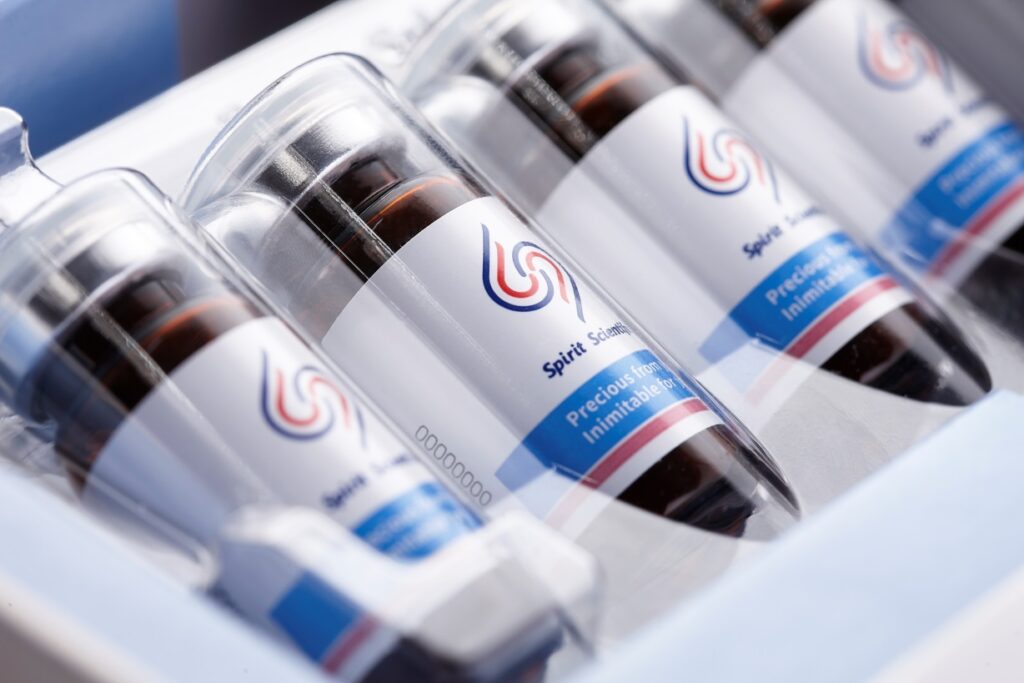

Platelet Lyophilized Treatment (PLT)
PLT is an abbreviation for Platelet-lyophilized Treatment. Platelets in human blood are known for their reparative properties and are widely used in various medical fields. Platelets contain high level of growth factors that can stimulate the generation of collagen and cell and tissue repair. They can be used in conjunction with laser surgery to help restore elasticity to sagging skin.
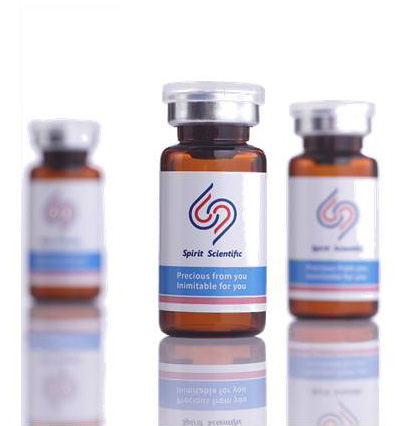
血小板在臨床醫學的應用
除皺、緊致、改善凹陷痘疤、肌膚紋路、淡化黑色素斑點、自體脂肪移植……等等。 加速表皮細胞、上皮細胞的成長,提高再生能力,大幅縮短恢復時間,提高恢復治療的療效,並可搭配雷射治療效果,增加纖維母細胞的數量、撫平皺紋、痘疤,妊娠紋的輔助改善,及私密婦科的治療。
專業研發
由思必瑞特(Spirit Scientific)生技團隊研發PLT凍晶修護,以專利技術完整規劃PLT凍晶修護服務流程,突破舊式PRP保存上的限制,血小板在肌膚新生和傷口癒合上擔任重要角色,萃取血液中提煉出來的修護成分維持最佳活性,並可在室溫下保存三年。
精準治療
PLT凍晶修護能讓醫師更精準處理過去治療相對有極限的疾病或問題,也由於產品取於自身,不會有過敏問題,與其他療程做複合式療法更能幫助提升術後成果。
Application of platelets in clinical medicine
PLT is suitable for anti-aging supplementary medical therapy, and its ability to target skin aging means that its applications include skin tightening, improvement of depressed acne scars, skin texture, lightening of melanin spots, autologous fat transfer, etc. It can accelerate the growth of epidermal and epithelial cells, improve regenerative abilities, significantly shorten the recovery time, enhance the effectiveness of recovery treatments, and can be combined with laser treatment to increase the number of fibroblasts, smoothen out wrinkles, reduce acne scars, improve stretch marks, and can be used in gynecological treatments.
Research and development team
PLT is developed by the Spirit Scientific Lab team who have developed the process of PLT after thorough research by using their patented technology. By extracting and refining repair components from the blood, PLT breaks through the limitations of traditional platelet-rich plasma (PRP) preservation methods and plays a crucial role in skin regeneration and wound healing. These extracted components maintain optimal activity and can be stored at the room temperature for up to three years.
Precision Treatment
PLT allows doctors to more precisely treat diseases or problems that had limited treatment options available previously. Because the product is derived from the user’s own body, there are no allergy issues, and combining it with other types of treatment can help improve postoperative results.
Comparing PLT with Traditional PRP
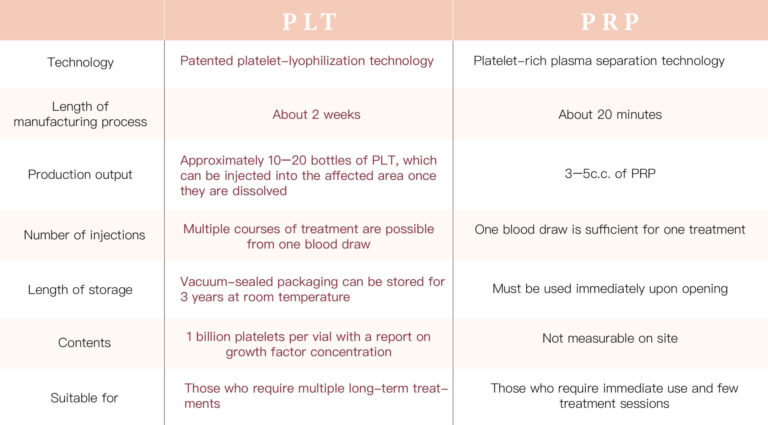
As compared with PRP, PLT can achieve a greater concentration of platelets and growth factors while leaving only a fewer white blood cells and plasma impurities, achieving better treatment results and reducing pain. With PLT technology, platelet concentration is approximately 2–3 times that of PRP, and the concentration of platelet-derived growth factor (PDGF) BB is 5–8 times higher. PDGF is one of the indicators of platelet activity. Measuring PDGF concentration allows for an estimation of purified platelet activity, further helping to create a precise medical treatment.
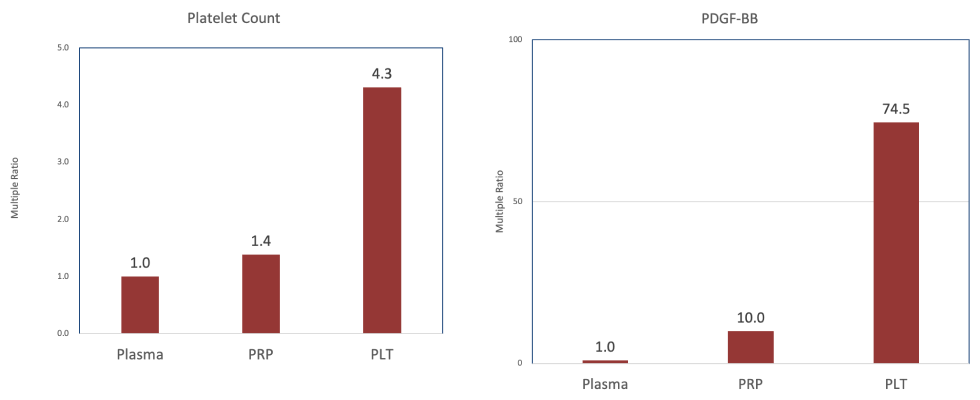
Store Your Repair Factors
- PLT separates pure platelets in a clean and sterile environment.
- One blood draw can produce about 10–20 bottles of lyophilized platelets, that can be used for multiple courses of treatment.
- There are 1 billion platelets per PLT bottle, and the growth factor concentration test report is attached to assist doctors in designing treatment plans.
PLT Production Process

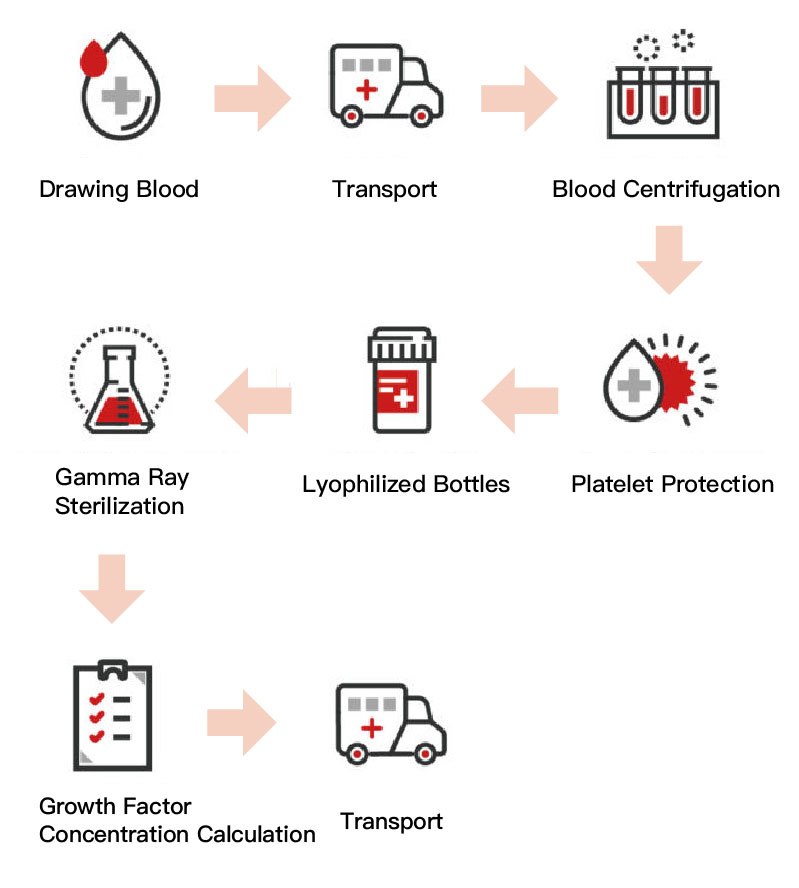
PLT Features
- Dosage:customized product, 10–20 bottles of lyophilized platelets can be produced at a time.
- Complete activation process:growth factor activity can be maintained for 3 years at the room temperature.
- Autologous Repair:pair with treatments to improve skin’s base endurance.
- Applicable to all skin types:suitable for sensitive and rosacea-prone skin.
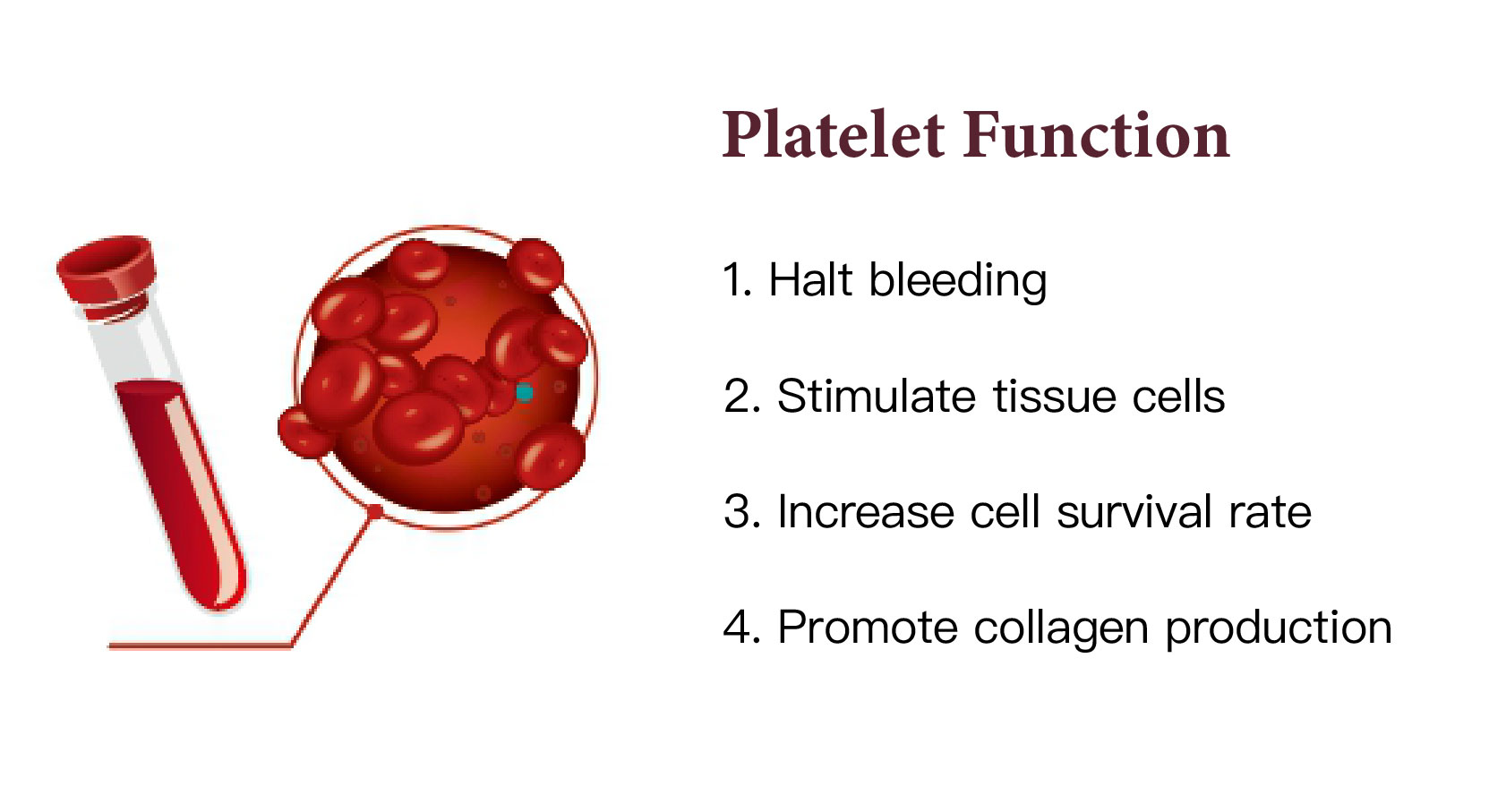
FAQ
• Those with septicemia and bacteremia.
• Those with the tendency to develop keloid scars.
• Those undergoing active cancer treatment.
• Those who have an infection at the injection site.
• Those with immune system disorders, such as lupus erythematosus.
• Those with serious blood-borne infectious diseases.
• Those who are on an empty stomach.
• Those who are severely underweight.
• Those who are on their period.
• Those who are pregnant or within 6 months postpartum (including miscarriage).
•Those with high/low blood pressure.
• Those on a long-term anticoagulant medications.
The main focus of postoperative care for PLT treatment is to prevent the affected area. Since PLT is applied to the wound, it does not have much impact on the outer appearance. If possible, avoid consuming allergic foods and refrain from smoking, drinking alcohol, or chewing betel nut for three days. Follow the doctor’s instructions for proper care.
- After phototherapy treatment, appropriate moisturizer and ice packs will be provided at the clinic.
- For a month after the treatment, you must continue to pay close attention to using sun protection and moisturizer, and avoid excessive exercise.
- When outdoors, we recommend the use of sun protection accessories, such as umbrellas, hats, and masks, as a prevention against UV rays.
- If scabs develop after the treatment, do not pick at or forcefully clean the affected area with your hands.
- Ensure to moisturize the affected area and allow scabs to peel off naturally.
- If you experience any discomfort after the treatment, please feel free to contact the clinic staff at any time to arrange for a consultation.